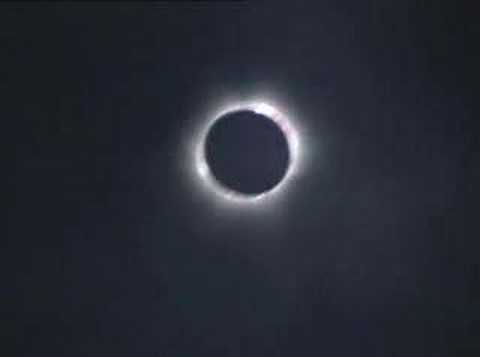Scotland will be plunged into near darkness on Friday because of a rare solar eclipse. Our at-a-glance guide tells you where and how to watch the unusual astronomical phenomenon.
What is it?A solar eclipse – or an occulation as it is properly known – occurs when the moon passes between the Earth and the sun, blocking out all the light.
It is incredibly rare for such events to be visible from the UK. The next time it will happen will be 2026 and after that, 2090.
It last happened in 1999 and looked like this:
https://youtube.com/watch?v=K9ScuKECVYc%3Frel%3D0%26showinfo%3D0What
time will Friday’s eclipse take place?The eclipse will begin to become visible around 8am but will peak around 9.30am.
In the Faroe Islands the sun will be completely blocked out but in Tayside and Fife only around 94% of the sun will be obscured.How do I watch it?Carefully. Looking directly into the sun can be blinding, even more so if looking at it through binoculars or a telescope.
The Mills Observatory in Dundee is setting up solar telescopes to enable safe viewing from 8am while St Andrews University is also setting up solar telescopes at the entrance to its School of Physics and Astronomy.
Dundee Astronomical Society secretary David Paterson said: “Looking at it with the naked eye can be dangerous because of the amount of heat and light. Using anything like binoculars or a telescope is an absolute no-no.
“It’s so easy to damage your eyes looking at the sun.”How do I see the eclipse if I can’t go to an organised event?The safest option is to make a pinhole camera, which allows you to view the eclipse without looking directly at it.
Luckily, there are plenty of guides online telling you how to make one:
https://youtube.com/watch?v=0Bx8P4EvYLA%3Frel%3D0%26showinfo%3D0Is
there anything else I should know?While it will definitely get darker on Friday morning, cloudy conditions may make it harder to see the eclipse itself.
The Met Office is prediction that most of Scotland will have at least some cloud cover.
https://twitter.com/metdesk/status/578463578207977472Any
other problems?
Potentially: power companies are expecting a surge in demand for power as things go dark and it is the first time there has been a solar eclipse since solar panels became an important source of energy.
The UK has around five gigawatts of solar capacity, the equivalent of eight conventional power stations. However, National Grid are confident the situation is manageable.Will I be allowed to watch it at work?
That depends on your boss. The Office for National Statistics said the 1999 eclipse lost the economy around £500 million due to lost productivity.
Friday’s eclipse is expected to have an even bigger impact.How did they cope in the olden days?
Usually with a mixture of terror and occasional baying at the moon.
Although there is evidence that the Babylonians and anicent Chinese were able to predict solar eclipses, other civilisations did not handle things so well.
The Vikings thought eclipses were a sign Ragnarok was about to happen, bringing about the apocalypse. They believed the trigger for this were wolves eating the sun or moon and so made as much noise as they could to scare the animals away.
And it’s believed that ancient Egyptians, who worshipped the sun, thought eclipses were such terrifying omens they refused to even write about them.Visit www.thecourier.co.uk for eclipse build-up from first thing on Friday. If you have videos or pictures you want to share, please email news@thecourier.co.uk or post on our Facebook pageor on Twitter.
